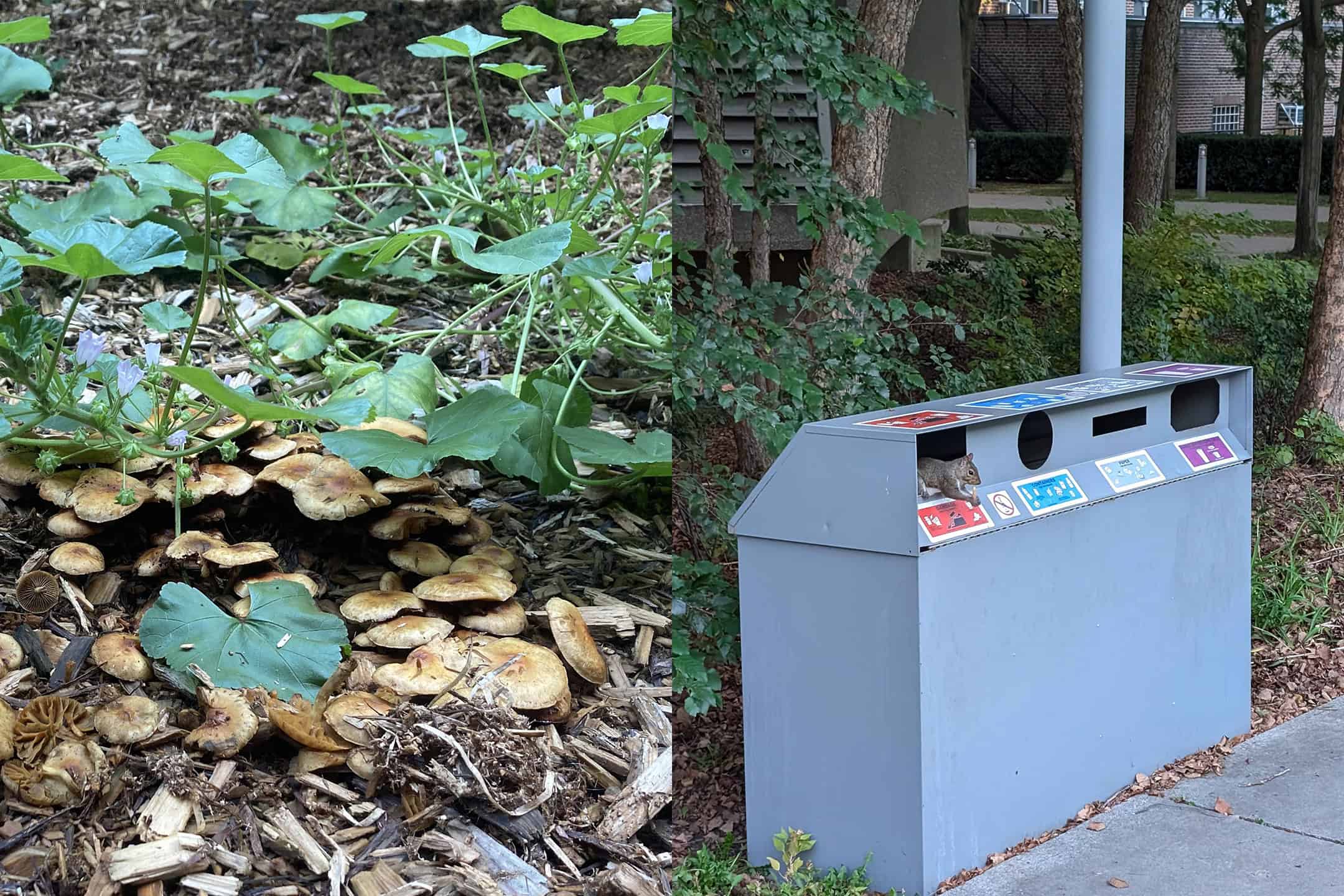It isn’t uncommon to see one or more students on U of T’s campuses waving their hands at a squirrel in a bid to lure them over. Wildlife exists across the city, but the university is a notable hub for different animals. While animals are common across rural areas in Canada, many of these species on campus have adapted in various ways to thrive in urban environments.
Tree squirrels: At home in a trash can
An interesting difference between urban and suburban areas is that while squirrels on campus freely approach students, those outside of the urban area are anything but calm.
In the suburbs, squirrels often flee up trees at the first notion of a person noticing them, while those in forested areas are almost seldom, owing to their more cautious lifestyle. Lingwen Ye, a first-year UTSG student, is still getting used to university life. She wrote in an email to The Varsity that the squirrels on campus are “much bolder than the squirrels I’ve encountered in the past… [and] they are everywhere.”
What creates such a change? Well, by hanging around groups of people regularly, being called over and fed often, the squirrels lose their aversion to humans. Their flight initiation distance — or the range at which they begin to run — quickly begins to decrease. The animals are also better able to feed themselves, complementing their diet with what food people toss them and what they can scavenge from the ground or trash bins.
George Mason University student Kate Ritzel and assistant professor Travis Gallo published a collection of research in the academic journal Frontiers, which documents this change in mammals. They concluded that “as learning and behavioural adjustments are the primary ways animals cope with environments, the highly modified urban landscape provides a proving ground for the ability of wildlife to adapt.” The animals that can adapt to living in an urban environment are the ones to thrive, as the survival of the fittest goes.
Of course, living in such a populated area also carries risks for the small creatures. Pest control, other animals, and vehicles all pose dangers to the city’s squirrels, which continues their aversion to human activities and potentially fuels aggression. “They don’t seem to be particularly bothered by humans, but… they keep a wary eye around us,” wrote Ye. After all, few things move as fast as a squirrel trapped inside a building.
A bird’s eye view of the city’s population
In the same vein, many avian species change their behaviour in response to urbanization. One of the birds most associated with city life — pigeons — has adapted much like the squirrel. Flourishing next to humans, pigeons on campus hover close to humans and fly off only when startled or charged. Digging into trash bins and picking up discarded street food, pigeons have learned that people — especially students — mean easy access to food. Another U of T student, V Tucci, brought up the fact that “they’re here because we domesticated them, and then we let them go… [now they’re] being domesticated by people [again].”
Humans have domesticated pigeons for centuries, keeping them for show, as pets, and as messengers, but were released into the wild. Since they were bred to be good at living in urban centres, they’re a very common sight across the city. Though some may think of pigeons as pests, others are beginning to take feral pigeons in as pets.
Another common bird — the house sparrow — flutters off at the slightest provocation in a great cloud of flocks. They pick at seeds, buds, and berries, and are found wherever humans are. These tiny birds thrive off of the security we provide from natural predators.
What else hides on our campus?
Perhaps when one thinks of animals living in urban centres, perhaps none come to mind more readily than the rat or mouse. These rodents, experienced in feeding off the waste of humans, are considered pests by most people, with exterminators being contacted for students on residence should one be seen.
With such an effort to be rid of them, rats and mice have come to be more nocturnal, appearing at times when they are less likely to be seen and flee at the first sign of danger. By risking themselves in the bid for food, the survivors have learned to avoid people, while still benefiting from their presence.
When someone mentions life that has been affected by urban sprawl, one likely doesn’t picture plant life; however, the flora around the school has similarly adapted to the life of students. One can see large pathways of dirt slicing through Queen’s Park — known as desire paths which arise as unplanned trails caused by people eroding the ground beneath — track the regular movements as students hurry from one building to another.
At UTSC, the Ma Moosh Ka Win Valley Trail provides ample space for students to enjoy nature. As people continue to travel on the path, they may trample plant life and compress the soil, making it more difficult for vegetation to bloom. On the opposite end of the spectrum, trees are often given ample space to expand, while mushroom colonies bloom in the less travelled areas.
Ultimately, with such diverse wildlife around U of T, running into something with a beak or paws between classes is a common occurrence. Living alongside almost 100,000 students, wildlife around the campus has been forced to adapt to our movements, working in a form of symbiosis as everyone tries to carve out their own ecological niche.



No comments to display.